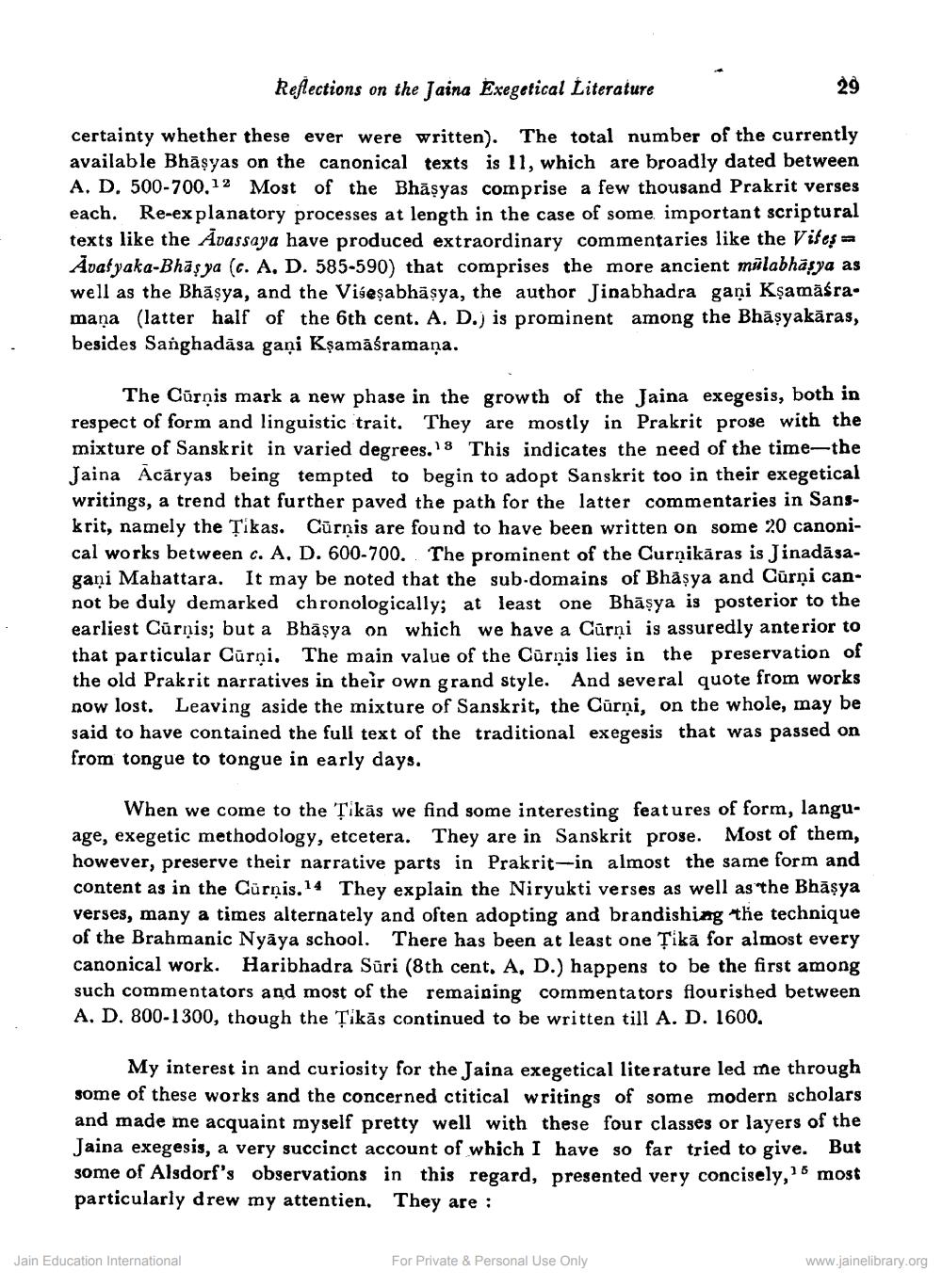Book Title: Reflections on the Jaina Exgetical Literature Author(s): B K Khadabadi Publisher: Z_Aspect_of_Jainology_Part_3_Pundit_Dalsukh_Malvaniya_012017.pdf View full book textPage 3
________________ Reflections on the Jaina Exegetical Literature 29 certainty whether these ever were written). The total number of the currently available Bhāşyas on the canonical texts is 11, which are broadly dated between A. D. 500-700.12 Most of the Bhāşyas comprise a few thousand Prakrit verses each. Re-explanatory processes at length in the case of some important scriptural texts like the Avassaya have produced extraordinary commentaries like the Vibes = Āvafyaka-Bhas ya (c. A, D. 585-590) that comprises the more ancient mülabhasya as well as the Bhāșya, and the Viseșabhāsya, the author Jinabhadra gani Kşamāśra. maņa (latter half of the 6th cent. A. D.) is prominent among the Bhāşyakāras, besides Sanghadāsa gani Kşamāśramaņa. The Cūrnis mark a new phase in the growth of the Jaina exegesis, both in respect of form and linguistic trait. They are mostly in Prakrit prose with the mixture of Sanskrit in varied degrees. 18 This indicates the need of the time-the Jaina Acāryas being tempted to begin to adopt Sanskrit too in their exegetical writings, a trend that further paved the path for the latter commentaries in Sanskrit, namely the Țikas. Cūrņis are found to have been written on some 20 canonical works between c. A, D. 600-700. The prominent of the Curņikāras is Jinadāsagani Mahattara. It may be noted that the sub-domains of Bhåşya and Cūrņi cannot be duly demarked chronologically; at least one Bhāşya is posterior to the earliest Cūrņis; but a Bhāşya on which we have a Cūrņi is assuredly anterior to that particular Cūrņi. The main value of the Cürņis lies in the preservation of the old Prakrit narratives in their own grand style. And several quote from works now lost. Leaving aside the mixture of Sanskrit, the Cūrņi, on the whole, may be said to have contained the full text of the traditional exegesis that was passed on from tongue to tongue in early days. When we come to the Țikās we find some interesting features of form, language, exegetic methodology, etcetera. They are in Sanskrit prose. Most of them, however, preserve their narrative parts in Prakrit-in almost the same form and content as in the Cürņis. 14 They explain the Niryukti verses as well as the Bhāșya verses, many a times alternately and often adopting and brandishing the technique of the Brahmanic Nyaya school. There has been at least one Țikā for almost every canonical work. Haribhadra Sūri (8th cent. A, D.) happens to be the first among such commentators and most of the remaining commentators flourished between A. D. 800-1300, though the Țikās continued to be written till A. D. 1600. My interest in and curiosity for the Jaina exegetical literature led me through some of these works and the concerned ctitical writings of some modern scholars and made me acquaint myself pretty well with these four classes or layers of the Jaina exegesis, a very succinct account of which I have so far tried to give. But some of Alsdorf's observations in this regard, presented very concisely, most particularly drew my attentien. They are : Jain Education International For Private & Personal Use Only www.jainelibrary.orgPage Navigation
1 2 3 4 5 6 7
